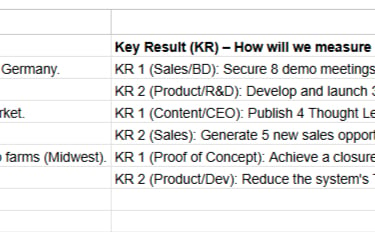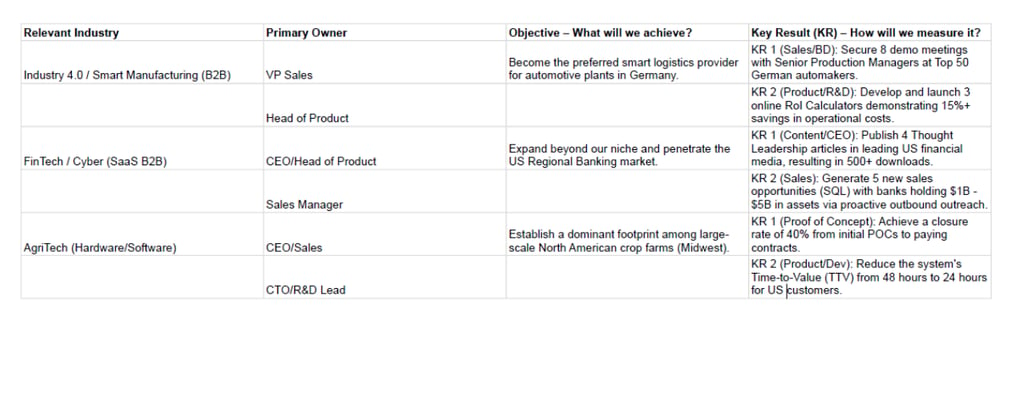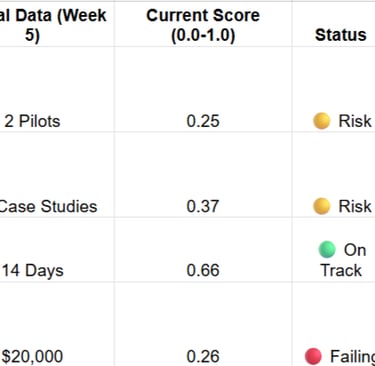OKR: The Hidden Growth Engine Behind Global Tech Success
Blog post description.
2 min read
Learn how Israeli tech companies use OKRs to turn product and R&D
focus into measurable marketing and sales results.
For small Israeli companies with cutting-edge technology and global aspirations, but lacking a dedicated marketing department, the OKR (Objectives and Key Results) framework is not just a management tool—it is the de facto marketing and sales strategy.
OKR strategically leverages your most valuable resources (expertise, product, and CEO's time) by replacing traditional, often inefficient, external marketing activities with focused, measurable, and mandatory internal alignment.
Part I: Simplicity and Effectiveness – How OKR Manages Your Growth
1. Simplicity: Turning Vision into Measurable Action
OKR addresses the critical question:
What exactly must we accomplish today to achieve our global goals tomorrow?
The model breaks down global complexity into 90-day cycles (quarters), demanding the team focus on only 1-2 major objectives at a time.
The Power of the Objective (Qualitative Goal): The Objective serves as the emotional compass for the small company. It must be ambitious ("Conquer a solid foothold in the European FinTech market"), yet not directly measurable. It provides motivation and ensures alignment across R&D, Product, and Sales.
The Power of Key Results (Quantitative Metrics): The KRs are the measurable fuel. They explicitly define what success looks like. They transform the work of R&D, Product, and Sales into measurable global marketing and sales efforts.
2. Effectiveness: Accountability Replaces Wasted Marketing Spend
Instead of burning cash on broad, untargeted marketing campaigns, OKR forces the team to define KRs that are hyper-focused sales and marketing activities, each with a single owner:


This model establishes total transparency—the team knows exactly who is accountable for every metric critical to global expansion.
Part II: Practical OKR Examples Across Key Israeli Industries
The following examples demonstrate how different departments own the "marketing" responsibility:


Part III: Real-World OKR Management – Gap Analysis and Action
The following table simulates an actual weekly Check-in sheet (Week 5 of Q3) for a small Israeli FinTech company.
Objective (Q3): Establish the initial foothold in the Mid-Market Banking sector in Mexico and Colombia.


Part IV: Key Takeaways for OKR-Driven Leadership
Measurement as the Manager (The Score is the Boss): The KR score (0.0 – 1.0) manages the team. The focus shifts from "Did you do the activity?" to "Did you achieve the measurable outcome?"
The "Deep Dive" Session – Immediate Gap Remediation: Real discussion happens in "Deep Dive" sessions, held only when a KR is at risk (score below 0.5). R&D and Product tasks are then prioritized based on the most immediate sales and marketing needs.
OKR Forces R&D to Be Marketing-Driven: OKR mandates that technical advantages (like product speed or efficiency) be translated into direct sales metrics (e.g., "Reduce TTV to 7 days" – a technical metric with clear sales implications).

Address
4/12 Gershon Sharshevski,
Mazkeret Batya, Israel


